This article was co-authored by Luba Lee, FNP-BC, MS and by wikiHow staff writer, Christopher M. Osborne, PhD. Luba Lee, FNP-BC is a Board-Certified Family Nurse Practitioner (FNP) and educator in Tennessee with over a decade of clinical experience. Luba has certifications in Pediatric Advanced Life Support (PALS), Emergency Medicine, Advanced Cardiac Life Support (ACLS), Team Building, and Critical Care Nursing. She received her Master of Science in Nursing (MSN) from the University of Tennessee in 2006.
There are 12 references cited in this article, which can be found at the bottom of the page.
wikiHow marks an article as reader-approved once it receives enough positive feedback. In this case, 100% of readers who voted found the article helpful, earning it our reader-approved status.
This article has been viewed 1,765,027 times.
Swelling is very common and happens for many different reasons, but you can usually treat it successfully at home. If you have localized swelling due to an injury or medical procedure, treatments like rest and ice usually do the job. For chronic fluid retention (edema) due to pregnancy, medication side effects, congestive heart failure, vascular disease, or other causes, things like light exercise and dietary changes often help. So, unless you have emergency swelling (such as due to an allergic reaction) that needs immediate medical attention, read on for some helpful advice on reducing swelling on your own.[1]
Steps
Managing Swelling Due to Injury
-
1Rest and elevate the swollen area. If you twisted your ankle playing basketball, for example, trying to “gut it out” by playing the next day will only make the problem worse. Instead, give the swollen area time to rest and recover! When possible, elevate the swollen area while resting so that it’s even with or higher than your heart—this helps manage blood flow to the area.[2]
- In many cases, swelling will resolve on its own after 1-3 days of rest.
- If you have an injured foot, consider using crutches or a cane to take the pressure off the swollen area. When you are sitting or lying down, prop up the swollen area on pillows.
- If you have a swollen arm caused by an injury, use the other arm to perform tasks, or ask for help from someone else. Use a sling to keep your arm elevated if necessary.
-
2Apply ice for up to 20 minutes per hour for the first 3 days. Icing is most effective during the first 72 hours after the swelling first occurs. Wrap an ice pack, bag of ice cubes, or bag of frozen vegetables in a tea towel and hold it to the swollen area for up to 20 minutes, then wait at least 40 minutes before repeating the process. Don’t apply ice more frequently or it may actually end up increasing the swelling.[3]
- Icing reduces blood flow to the area and helps manage swelling, inflammation, and pain.
- If you’re still experiencing pain and swelling in an injured area after 72 hours of regular icing, contact your doctor. Call the doctor sooner if the pain or swelling gets worse even with frequent icing.
- Do not apply ice directly to your skin, as it may cause damage.
Advertisement -
3Take over-the-counter NSAIDs to reduce inflammation and pain. Popular OTC non-steroidal anti-inflammatory drugs (NSAIDs) include ibuprofen (Motrin/Advil) and naproxen (Aleve). Aspirin is also an NSAID, but may carry a higher risk of stomach upset or bleeding issues. Acetaminophen (Tylenol) relieves pain but has no direct impact on swelling.[4]
- Take an OTC medication according to the product instructions. Talk to your doctor or pharmacist if you are on any prescription drugs, experience side effects, or have medication questions.
-
4Wrap the area to protect it and control further swelling. If you have a swollen ankle, knee, wrist, or elbow, for example, try wrapping the area with a non-adhesive elastic bandage. Wrap the bandage around the area so that you feel light compression but not pain, tingling, or numbness. Re-wrap the bandage as needed if it works itself loose and keep it on for at least the first 72 hours after swelling begins.[5]
- If you have access to an athletic trainer, physical therapist, or doctor, ask them for advice on wrapping your swollen joint.
- Alternatively, try compression stockings for your ankle or a compression sleeve for your knee or elbow. As with a bandage wrap, make sure they aren’t so tight that they cause tingling, numbness, or pain.
-
5Avoid applying heat during the first 3 days. Remember this during the first 72 hours after you start experiencing swelling: say “yes” to ice and “no” to heat! Applying heat to the area increases blood flow and swelling. However, after 72 hours, and once the swelling has begun to subside, applying heat for up to 20 minutes per hour may provide soothing relief and help loosen up stiff joints and muscles.[6]
- After the first 72 hours of regular icing, you may find relief by alternating between icing and heating the area—for instance, icing for 20 minutes, waiting 40 minutes, heating for 20 minutes, and so on.
-
6Eat foods in the “Mediterranean diet” that reduce inflammation. In broad terms, healthy foods like fruits and vegetables tend to have anti-inflammatory properties, while less healthy foods can increase inflammation. You can also reduce swelling with an anti-inflammatory diet rich in high-quality protein and low-glycemic vegetables. Aim to cut back on fried foods, processed meats, refined grains and sugars, and unhealthy fats, and increase your intake of foods found in the Mediterranean diet, especially the following:[7]
- Olive oil.
- Fruits like strawberries, blueberries, cherries, and oranges.
- Leafy greens like spinach, kale, and collards.
- Nuts like almonds and walnuts.
- Fatty fish like salmon, tuna, mackerel, and sardines.
Handling Chronic Swelling
-
1Take diuretics, if prescribed, to deal with edema. If you have excess fluid buildup (edema) due to a condition like pregnancy, medication side effects, kidney disease, cirrhosis of the liver, or congestive heart failure, your doctor might prescribe a diuretic such as furosemide (Lasix). You may be prescribed furosemide as a pill or an injection (done by your healthcare provider). Follow your doctor’s instructions carefully in either case.[8]
- Diuretics are sometimes called water pills. They reduce fluid retention by limiting how much salt your body absorbs.
- Edema most commonly occurs in the feet, ankles, and legs, and sometimes in the hands and arms.
-
2Do light exercise, such as walking, to help with chronic swelling. Resting the affected area is generally best for swelling due to an injury or medical procedure. However, chronic swelling due to a medical condition (like pregnancy) or lifestyle habits (like working at a desk all day) responds better when you combine rest with frequent periods of light exercise. For abdominal or lower body swelling, for example, getting up and taking 5-minute walks throughout the day may be really helpful. Or, consider light activities like yoga, swimming, or water aerobics.[9]
- Practice yoga poses such as the “waterfall,” which can encourage retained fluid to flow from your legs back to the rest of your body and reduce swelling.
- Don’t overdo it! Stick to light activity that doesn’t cause any additional soreness, pain, or swelling in the affected area.
- If you sit at a desk all day at work and end up with swelling in your lower legs, schedule a quick walk around the office at least once per hour.
-
3Eat nutrient-rich foods, especially those that are natural diuretics. Certain high-nutrient foods also have natural diuretic effects, such as asparagus, parsley, beets, grapes, green beans, leafy greens, pineapple, pumpkin, onion, leeks, and garlic. However, if you’re already on a diuretic medication, don’t eat more of these foods without consulting your doctor first.[10]
- Nutrient depletion, especially of potassium, magnesium, calcium, and zinc, is always a concern if you have edema and are on diuretic medications. Supplements may be necessary, but also try eating more of the following high-nutrient foods:[11]
- Potassium: potatoes, sweet potatoes, beans, and bananas.
- Magnesium: nuts, seeds, beans, and dark green vegetables.
- Calcium: milk products, broccoli, and kale.
- Zinc: meat, poultry, fish, legumes, and milk products.
- Nutrient depletion, especially of potassium, magnesium, calcium, and zinc, is always a concern if you have edema and are on diuretic medications. Supplements may be necessary, but also try eating more of the following high-nutrient foods:[11]
-
4Reduce your salt intake to decrease fluid retention. Cutting back on sodium is particularly helpful if you have edema, but it’s also beneficial for any type of swelling. It’s also just generally good for your overall health! Reduce your salt intake by eating fewer processed and packaged foods, opting for low- or no-salt alternatives when you do eat packaged foods, and replacing the salt you add to your dishes with more herbs, spices, and fresh flavors.[12]
- While the current adult sodium recommendation in the U.S. is to aim for less than 2,300 mg per day, try to lower that to 1,500 mg or less. It’s extremely difficult to get too little sodium in your diet, but talk to your doctor if you have congestive heart failure.[13]
-
5Drink lots of water, which helps to reduce—not increase—swelling. Since all types of swelling, and most especially edema, involve excess fluid retention, you might be tempted to cut back on your fluid intake. However, drinking enough water is essential to flushing sodium from your system and keeping your swelling in check. Instead of aiming for a set amount, try to drink water frequently enough that you never feel thirsty throughout the day.[14]
- Unexplained swelling can actually be a sign of dehydration.
- Opt for water and water-rich fruits and vegetables as much as possible, and cut back on alcohol (which can increase fluid retention) and sugary drinks (which often contain “hidden” sodium).
Getting Medical Attention
-
1Take immediate action if you have swelling due to an allergic reaction. A severe allergic reaction (called anaphylaxis) can cause rapid and life-threatening swelling of the face, lips, tongue, and throat. Other signs of anaphylaxis include shortness of breath, wheezing, coughing, drop in blood pressure, weak pulse, trouble swallowing, chest pains, nausea and vomiting, dizziness, and loss of consciousness. If you have such symptoms, take the following steps immediately:[15]
- Use an EpiPen (epinephrine injection) if you have been prescribed one due to a history of allergic reactions. Inject the dose into your outer thigh, right through your clothes. If you don’t have an EpiPen, immediately move on to the next step.
- Call emergency services or, even better, have someone who is with you do it. Always use your EpiPen first (if you have one).
- Get medical attention and follow up with your primary care doctor and allergist, even if you’re feeling better after using the EpiPen.
-
2Consult your doctor if you have persistent swelling. Call, for example, if your feet and ankles or abdomen consistently swell up. Likewise, contact your doctor if you have a swollen wrist from a sports injury that doesn’t respond to treatments like rest and icing after around 72 hours. In such cases it’s important to figure out whether an underlying problem may be causing your body to swell. While it can take up to 2-3 weeks for swelling from an injury to fully subside, it’s best to rule out other possibilities.[16]
- Don’t get overly worried here! Swelling is no big deal in most cases, but it just makes sense to rule out potential problems.
- Severe swelling during pregnancy may be a sign of pre-eclampsia, an uncommon but serious condition that causes high blood pressure along with swelling.
- Certain medications can cause the body to swell up. Anti-depressants, hormone treatments, and blood pressure medication, for instance, may lead to swelling.
- Heart failure, kidney failure, and liver failure cause fluid to collect in the body and lead to swelling.
-
3Call your doctor right away if you have swelling plus other serious symptoms. Swelling in conjunction with other symptoms could mean you are experiencing serious heart, kidney, or liver problems. If so, you need to seek medical attention right away. Contact your doctor if you have any of the following symptoms:[17]
- Chest pain.
- Shortness of breath.
- Fever.
- Warmth in the swollen area.
- A sudden increase in swelling during pregnancy.
- Swelling along with diagnosed heart or liver problems.
Expert Q&A
Did you know you can get expert answers for this article?
Unlock expert answers by supporting wikiHow
-
QuestionWhat should I do if my feet have become swollen for no reason?
 Jonas DeMuro, MDDr. DeMuro is a board certified Pediatric Critical Care Surgeon in New York. He received his MD from Stony Brook University School of Medicine in 1996. He completed his fellowship in Surgical Critical Care at North Shore-Long Island Jewish Health System and was a previous American College of Surgeons (ACS) Fellow.
Jonas DeMuro, MDDr. DeMuro is a board certified Pediatric Critical Care Surgeon in New York. He received his MD from Stony Brook University School of Medicine in 1996. He completed his fellowship in Surgical Critical Care at North Shore-Long Island Jewish Health System and was a previous American College of Surgeons (ACS) Fellow.
Board Certified Critical Care Surgeon Swollen feet, without antecedent trauma, can occur from a variety of causes, including blood clots in the legs, cardiac causes, renal issues, and pelvic masses, among other things. With such a wide differential, this needs to be seen by your physician for a thorough history and physical, and to determine a strategy for a workup.
Swollen feet, without antecedent trauma, can occur from a variety of causes, including blood clots in the legs, cardiac causes, renal issues, and pelvic masses, among other things. With such a wide differential, this needs to be seen by your physician for a thorough history and physical, and to determine a strategy for a workup. -
QuestionI am 50 years old and work inside as a housemaid. It's physically exhausting, and I have a lot of pain and swelling. What medication can I take for this?
 Jonas DeMuro, MDDr. DeMuro is a board certified Pediatric Critical Care Surgeon in New York. He received his MD from Stony Brook University School of Medicine in 1996. He completed his fellowship in Surgical Critical Care at North Shore-Long Island Jewish Health System and was a previous American College of Surgeons (ACS) Fellow.
Jonas DeMuro, MDDr. DeMuro is a board certified Pediatric Critical Care Surgeon in New York. He received his MD from Stony Brook University School of Medicine in 1996. He completed his fellowship in Surgical Critical Care at North Shore-Long Island Jewish Health System and was a previous American College of Surgeons (ACS) Fellow.
Board Certified Critical Care Surgeon Your symptoms of swollen legs with body aches is quite nonspecific, and has a wide differential of possible diagnoses. These include, but are not limited to, heart problems, joint problems, and issues with the veins of your legs, or perhaps a combination. You are best examined by your physician to determine further treatment, as without a precise diagnosis, it is impossible to say what medicine might be able to help you.
Your symptoms of swollen legs with body aches is quite nonspecific, and has a wide differential of possible diagnoses. These include, but are not limited to, heart problems, joint problems, and issues with the veins of your legs, or perhaps a combination. You are best examined by your physician to determine further treatment, as without a precise diagnosis, it is impossible to say what medicine might be able to help you. -
QuestionElevation, compression and ice are not reducing the swelling in my injury. What should I do?
 Jonas DeMuro, MDDr. DeMuro is a board certified Pediatric Critical Care Surgeon in New York. He received his MD from Stony Brook University School of Medicine in 1996. He completed his fellowship in Surgical Critical Care at North Shore-Long Island Jewish Health System and was a previous American College of Surgeons (ACS) Fellow.
Jonas DeMuro, MDDr. DeMuro is a board certified Pediatric Critical Care Surgeon in New York. He received his MD from Stony Brook University School of Medicine in 1996. He completed his fellowship in Surgical Critical Care at North Shore-Long Island Jewish Health System and was a previous American College of Surgeons (ACS) Fellow.
Board Certified Critical Care Surgeon
References
- ↑ https://medlineplus.gov/ency/article/003104.htm
- ↑ https://www.uofmhealth.org/health-library/swell#tp17762
- ↑ https://www.nationwidechildrens.org/specialties/sports-medicine/sports-medicine-articles/swelling-the-bodys-reaction-to-injury
- ↑ https://www.uofmhealth.org/health-library/swell#tp17762
- ↑ https://www.uofmhealth.org/health-library/tw4354spec
- ↑ https://www.nationwidechildrens.org/specialties/sports-medicine/sports-medicine-articles/swelling-the-bodys-reaction-to-injury
- ↑ https://www.health.harvard.edu/staying-healthy/foods-that-fight-inflammation
- ↑ https://www.uptodate.com/contents/edema-swelling-beyond-the-basics#H15
- ↑ https://health.clevelandclinic.org/6-best-ways-relieve-swollen-feet-ankles-home/
- ↑ https://health.clevelandclinic.org/natural-diuretics/
- ↑ https://familydoctor.org/changing-your-diet-choosing-nutrient-rich-foods/
- ↑ https://www.heart.org/en/healthy-living/healthy-eating/eat-smart/sodium/how-to-reduce-sodium
- ↑ https://www.heart.org/en/healthy-living/healthy-eating/eat-smart/sodium/how-much-sodium-should-i-eat-per-day
- ↑ https://www.uofmhealth.org/health-library/swell#tp17762
- ↑ https://my.clevelandclinic.org/health/diseases/8630-urticaria-hives-and-angioedema
- ↑ https://medlineplus.gov/ency/article/003104.htm
- ↑ https://medlineplus.gov/ency/article/003104.htm
About This Article
If you’re suffering from swelling due to an injury, rest the injured area as much as possible, and elevate it if you can. Place an ice pack over the swelling for about 15 minutes at a time, several times a day. However, you should avoid applying heat, as this can make the swelling worse. You can also take over-the-counter NSAIDs like ibuprofen and naproxen to help decrease the swelling. If the swelling persists for more than a few days, see your doctor. To learn about treatments for general swelling, keep reading!
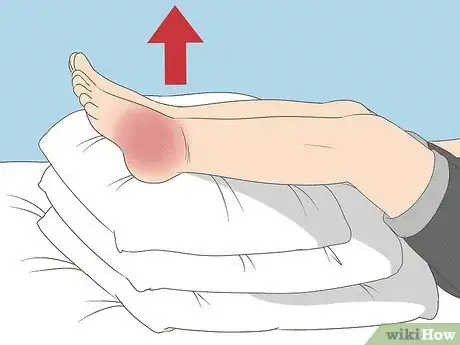
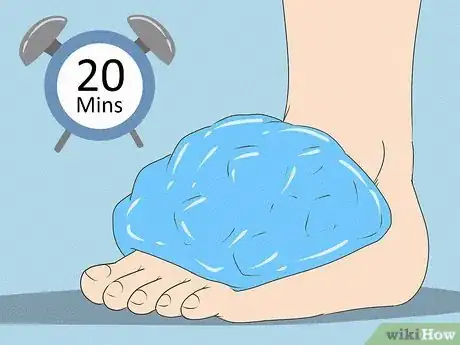
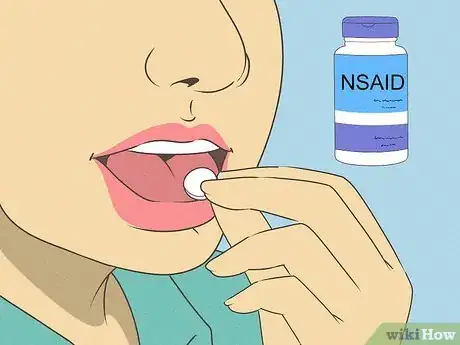

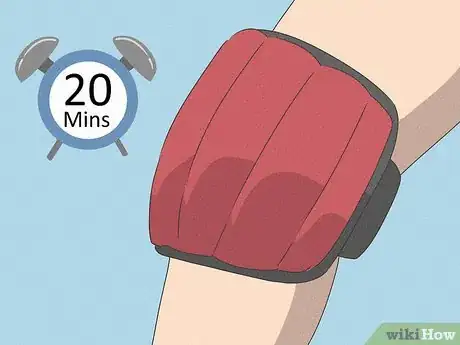

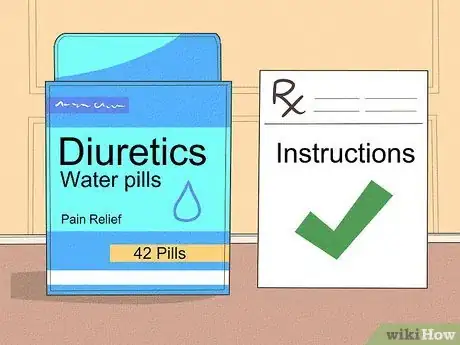

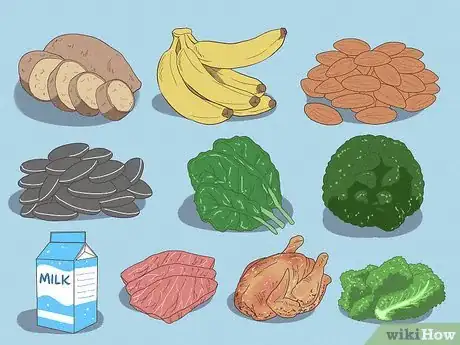
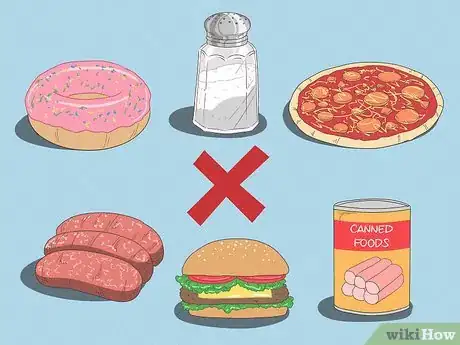
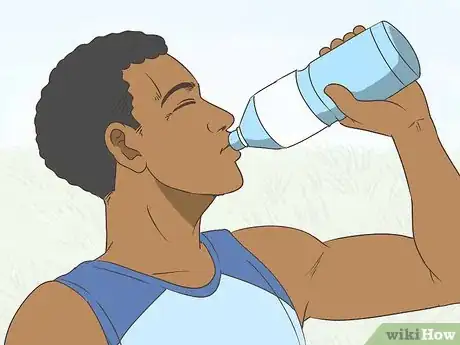
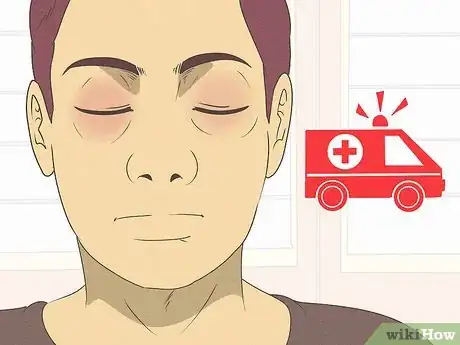
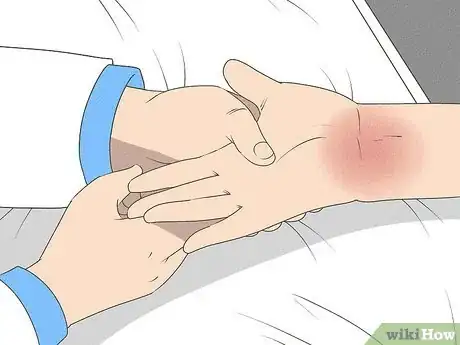
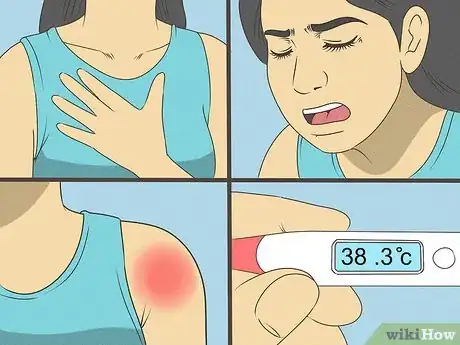
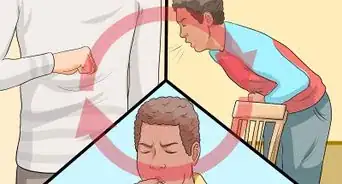

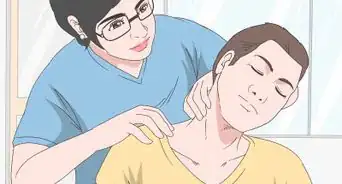
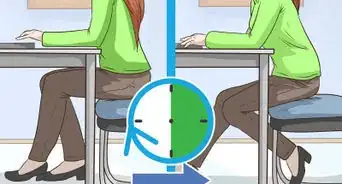

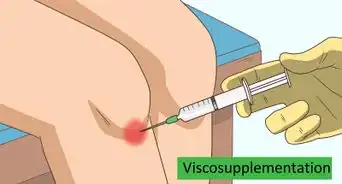
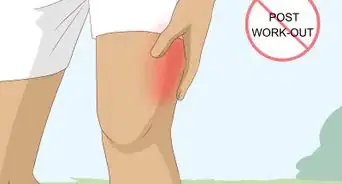

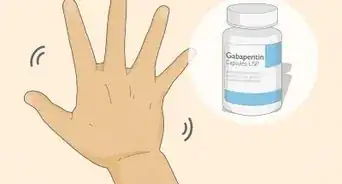




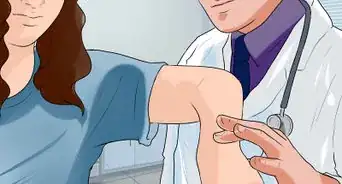











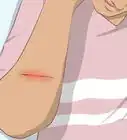
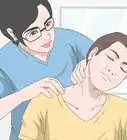




































Medical Disclaimer
The content of this article is not intended to be a substitute for professional medical advice, examination, diagnosis, or treatment. You should always contact your doctor or other qualified healthcare professional before starting, changing, or stopping any kind of health treatment.
Read More...